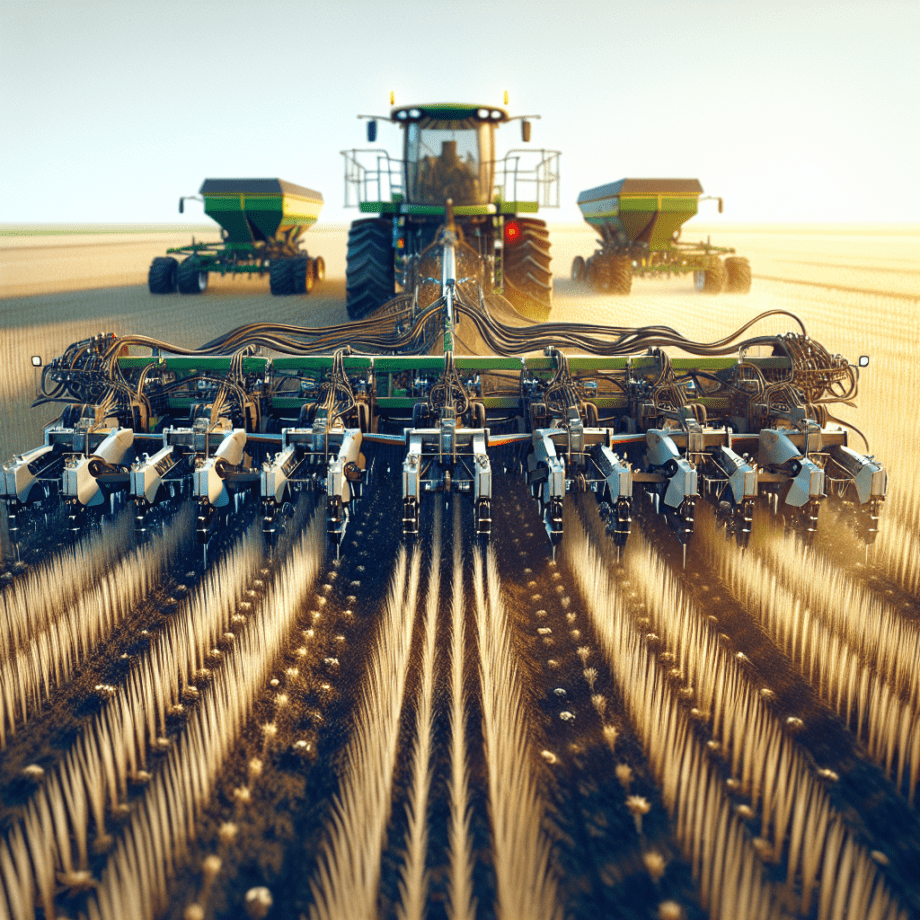Precision seeders have revolutionized modern agriculture by significantly improving crop yields. These advanced machines offer unparalleled accuracy in seed placement, depth, and spacing, which are critical factors in maximizing the potential of each planted seed. This article delves into the mechanics of precision seeders and their impact on agricultural productivity.
Understanding Precision Seeders
Precision seeders are specialized agricultural machines designed to plant seeds at precise intervals and depths. Unlike traditional seeders, which may scatter seeds unevenly, precision seeders use advanced technology to ensure each seed is placed exactly where it needs to be. This precision is achieved through a combination of GPS technology, sensors, and sophisticated software that controls the seeding process.
Components of Precision Seeders
Precision seeders consist of several key components that work together to achieve accurate seed placement:
- Seed Metering System: This system controls the flow of seeds from the hopper to the soil. It ensures that seeds are released at consistent intervals, preventing overcrowding or gaps.
- GPS Guidance: GPS technology guides the seeder along pre-determined paths, ensuring straight rows and optimal seed spacing. This reduces overlap and missed areas, maximizing field utilization.
- Sensors: Various sensors monitor soil conditions, seed depth, and other factors in real-time. This data is used to make on-the-fly adjustments, ensuring optimal planting conditions.
- Control Software: Advanced software integrates data from the GPS and sensors to control the seeding process. Farmers can input specific parameters, such as seed spacing and depth, to tailor the planting process to their needs.
Types of Precision Seeders
There are several types of precision seeders, each designed for specific crops and planting conditions:
- Row Crop Planters: These seeders are used for crops like corn, soybeans, and cotton. They plant seeds in rows with precise spacing and depth, ensuring uniform growth.
- Air Seeders: Air seeders use air pressure to distribute seeds evenly across the field. They are ideal for planting small grains like wheat and barley.
- Drill Seeders: Drill seeders are used for crops that require close spacing, such as grasses and legumes. They plant seeds in narrow rows, maximizing field coverage.
Benefits of Precision Seeders
The adoption of precision seeders offers numerous benefits to farmers, including improved crop yields, reduced input costs, and environmental sustainability.
Improved Crop Yields
Precision seeders ensure that each seed is planted at the optimal depth and spacing, which promotes uniform germination and growth. This uniformity leads to healthier plants and higher yields. Additionally, precision seeders reduce the risk of seed wastage, ensuring that every seed has the best chance to develop into a productive plant.
Reduced Input Costs
By planting seeds with precision, farmers can reduce the amount of seed, fertilizer, and other inputs needed. Precision seeders minimize overlap and gaps, ensuring that resources are used efficiently. This not only lowers input costs but also reduces the environmental impact of farming practices.
Environmental Sustainability
Precision seeders contribute to sustainable agriculture by reducing the need for chemical inputs and minimizing soil disturbance. By planting seeds at the optimal depth and spacing, these machines promote healthy root development and reduce soil erosion. Additionally, precision seeders can be used in conservation tillage systems, which help preserve soil structure and organic matter.
Challenges and Future Developments
While precision seeders offer numerous benefits, there are also challenges associated with their adoption. These include the high initial cost of the equipment, the need for technical expertise, and the requirement for ongoing maintenance and calibration. However, advancements in technology and increased awareness of the benefits of precision agriculture are driving the development of more affordable and user-friendly precision seeders.
Technological Advancements
Recent advancements in precision seeder technology include the integration of artificial intelligence (AI) and machine learning. These technologies enable precision seeders to analyze vast amounts of data and make real-time adjustments to the seeding process. For example, AI can predict optimal planting conditions based on weather patterns, soil moisture levels, and other factors, further improving crop yields.
Increased Accessibility
As the benefits of precision seeders become more widely recognized, efforts are being made to make these machines more accessible to small and medium-sized farms. This includes the development of cost-effective models and government incentives to support the adoption of precision agriculture technologies. Additionally, training programs and resources are being made available to help farmers understand and implement precision seeding practices.
Conclusion
Precision seeders represent a significant advancement in agricultural technology, offering numerous benefits to farmers and the environment. By ensuring accurate seed placement, these machines improve crop yields, reduce input costs, and promote sustainable farming practices. While challenges remain, ongoing technological advancements and increased accessibility are paving the way for wider adoption of precision seeders. As the agricultural industry continues to evolve, precision seeders will play a crucial role in meeting the growing demand for food while preserving natural resources.
